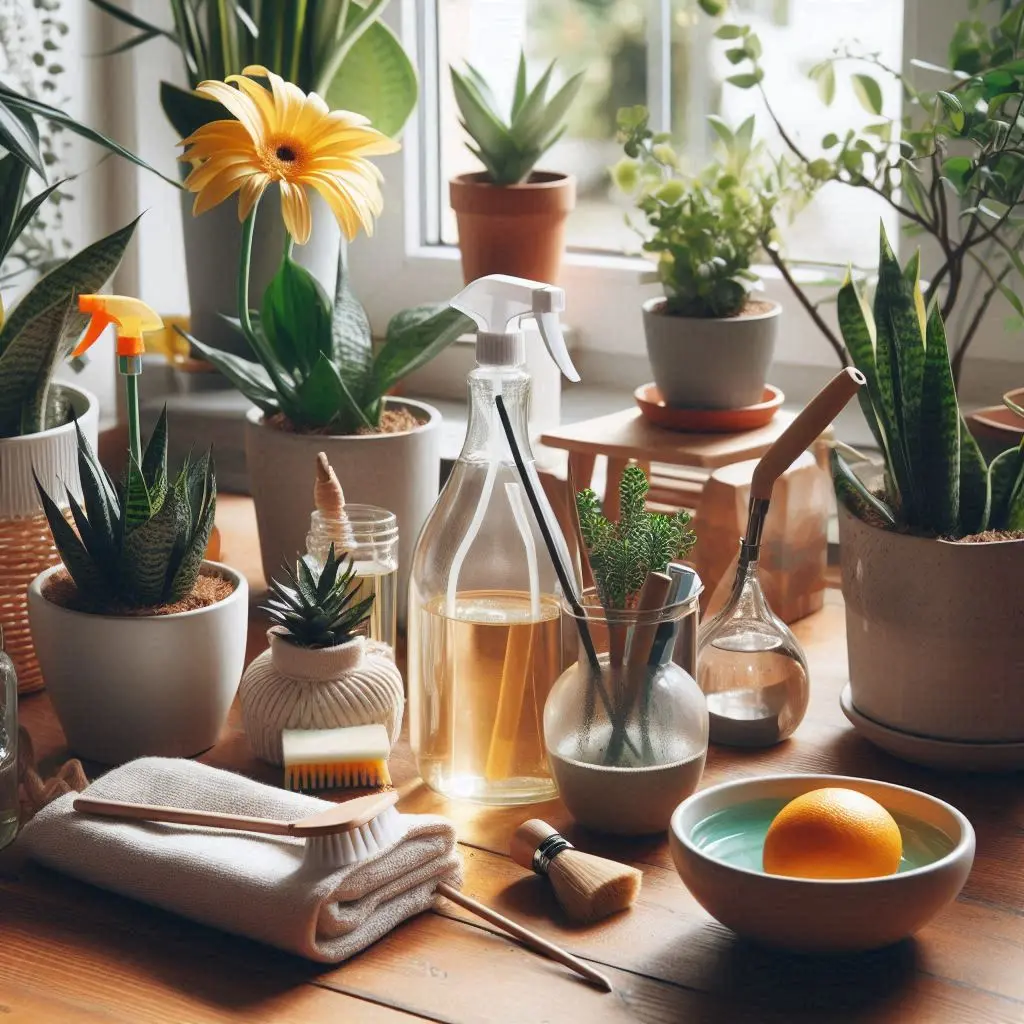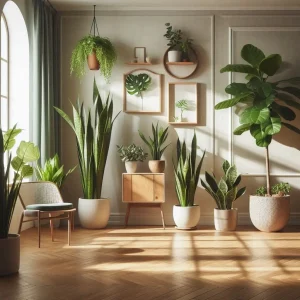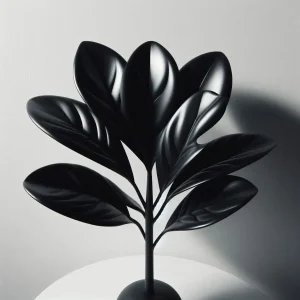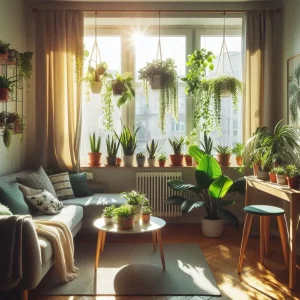| Soil Type | Primary Characteristics | Advantages | Disadvantages |
| Potting soil | Lightweight, well-draining | Suitable for most houseplants | May need frequent watering, lacks nutrients |
| Peat moss | Moisture-retentive, acidic | Improves soil structure, retains moisture | May become compacted over time, acidic for some plants |
| Perlite | Lightweight, aerating | Improves drainage, prevents soil compaction | Does not retain moisture, may float to surface |
| Vermiculite | Lightweight, moisture-retentive | Improves aeration, retains moisture | May compact over time, may contain asbestos |
| Coco coir | Sustainable, moisture-retentive | Environmentally friendly, retains moisture | May have high salt content, requires pre-treatment |
| Sand | Heavy, well-draining | Improves drainage, prevents waterlogging | Does not retain moisture, may cause compaction |
| Compost | Nutrient-rich, organic | Enriches soil, improves fertility | May contain pathogens, inconsistent composition |
| Garden soil | Natural, nutrient-rich | Contains organic matter, supports plant growth | May be heavy, may contain pests and weed seeds |
The most common and easiest way to clean indoor plants is by using water. For plants that are relatively sensitive or have small leaves, you can use water spraying, and for plants with larger leaves that can be washed, you can rinse them with lukewarm water. Washing plants with water can prevent the spread of pests that exist under the leaves. Avoid using cold or hot water for washing as it can cause stress to the plant and damage it.
To better remove dust and dirt from the leaves (for flowers like violets), gently wipe the leaves with a soft cloth dampened with lukewarm water to clean the dust and dirt present on the leaves. Never do this during midday. It’s better to use soft cloths to avoid damaging or scratching the leaves. To prevent damage to the leaves, always support the underside of the leaf with your other hand and avoid putting pressure on the stem with the cloth to prevent it from breaking.
Note: In cases where spots are created on the leaves of your plant due to spraying or cleaning with water, you can use distilled water to prevent spots from forming on the leaves.
Items needed for cleaning indoor plants:
Page Contents
Toggle
| Item | Description |
| Plants | Essential for indoor plant cleaning |
| Water | Used for spraying or rinsing plants |
| Spray bottle | For spraying water onto delicate plants |
| Cloth | Used for wiping leaves gently |
| Toothbrush | Helpful for cleaning hard-to-reach areas on leaves |
| Bucket | Used for holding water for rinsing larger plants |
| Liquid soap | Helps to remove stubborn dirt and grime from leaves |
| Mayonnaise | Optional, for polishing leaves |
read more: 24 Houseplants for who have dog as a pet
“Clean your plant leaves every few weeks. The best method to clean and prevent dirt and dust buildup on leaves is to wash them with lukewarm water. Avoid using cold water as it can create spots on the leaves and shock the roots. Remember that indoor plants are often from tropical regions and are accustomed to warm rains.
For washing small indoor plants, place the plant over the kitchen sink. If you have a high-pressure water sprayer, spray lukewarm water onto the plant.
For larger indoor plants, take them to the bathroom. Flexible and handheld showers are more suitable for this task. Allow the plant to dry and then return it to its place.”
Cleaning Indoor Plant Leaves with Milk
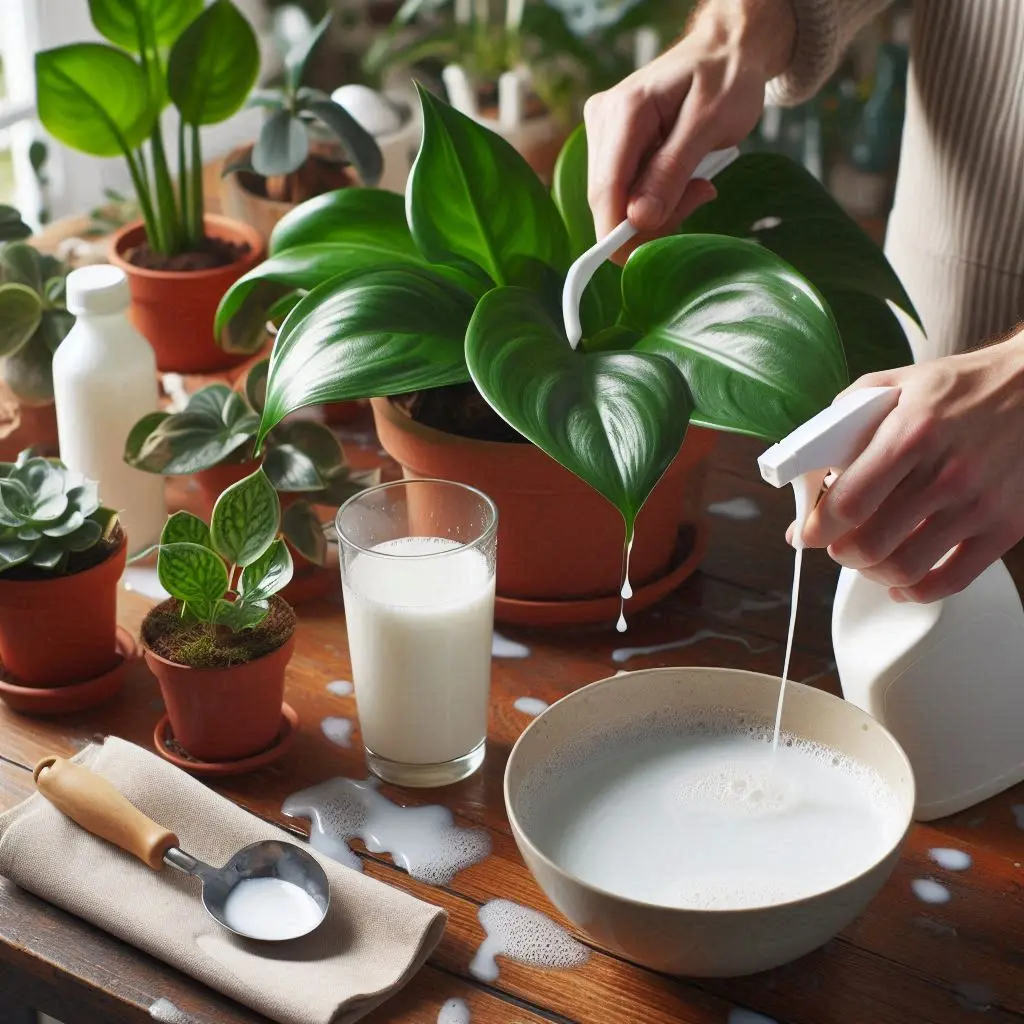
You can use milk to clean and polish your plant leaves. Milk, due to its fatty content similar to various oils, can make the leaves shiny, but this shine is temporary unless you use fat-free milk. Milk, because of its vitamins and minerals, can be beneficial for plant leaves, and the presence of a small dose of calcium is also beneficial for the leaves. Using milk to clean the leaves can somewhat disinfect the leaf surface (due to its antifungal and antibacterial properties). Using a mixture of fat-free milk and water in a 50/50 or 40/60 ratio can be an effective cleaner for the leaves and can also have nutritional benefits. Here, you might have questions about whether milk will make the plant smell bad or attract insects. In response to these questions, it should be said that when you mix milk with water in ratios of 50/50 or 40/60, it prevents the plant from smelling bad. However, when cleaning with milk, it is better to thoroughly dry and clean the leaves with a clean cloth to prevent insects from being attracted to the plant.
Note: Do not use flavored milk for cleaning plants.
Clean the plant leaves with a lint-free cloth.
One of the simplest methods for cleaning indoor plant leaves is to use a lint-free cloth. To do this, gently wipe the leaves with a cloth dampened with lukewarm water to remove any dust and dirt present on the leaves. Never do this during midday.
Paper towels and lint-free cloths are acceptable for this task, but they can be abrasive to the plant’s leaves. It’s better to choose a very soft cloth, such as an old T-shirt fabric, which can be a better option for you.
To prevent the leaves from being damaged, always support the underside of the leaf with your other hand and avoid putting pressure on the stem with the cloth when wiping.
Clean the dust and dirt off fuzzy leaves with an old toothbrush.
For plants with fuzz or debris, such as African Violets, it’s better to use soft toothbrushes for cleaning. The appropriate method for using a toothbrush to clean plants: Hold the leaf with your free hand to avoid damage, and gently clean them with the toothbrush.
Hold the leaf with your free hand to avoid damage, and gently clean them with the toothbrush in a gentle motion from the beginning to the end of the leaf.
In addition to the toothbrush, you can use small paintbrushes to sweep dust and dirt off fuzzy leaves.
Use of a water and liquid soap solution:
Plants with delicate, finely veined leaves, such as ferns, require meticulous cleaning of each leaf (e.g., maidenhair fern). These plants can be thoroughly cleaned with warm water and a gentle wash. Add a few drops of liquid soap to assist in leaf cleaning.
Hold the pot and soil with your hand and support it. Turn the pot upside down and immerse the leaves in a bucket of water. Gently agitate it in the water and then place it in a location to dry completely. This drying process should be done slowly, and never place it next to a heater or radiator.
Yes, you can use a combination of water and liquid soap to clean indoor plant leaves. For example, for plants with delicate and finely veined leaves, such as maidenhair ferns, where cleaning individual leaves can be time-consuming, you can wash them with warm water along with a few drops of liquid soap. When using liquid soap, avoid using very strong solutions and pay attention to the number of drops to prevent damage to the plant.
Hold the pot and soil with your hand and support it. Turn the pot upside down and immerse the leaves in a bucket of water. Gently agitate them in the water and then place them in a location to dry completely. This drying process should be done slowly, and never place them next to a heater or radiator.
Bathe your plants with warm water from the shower.
You can use this method occasionally. This method is suitable for plants that truly absorb dust and dirt. Plants like Christmas cacti and philodendrons, especially as they grow larger.
| Step | Description |
| 1. Place plants on plastic feet. | Elevate the plants by putting them on plastic feet or any raised surface to prevent waterlogging during showering. |
| 2. Shower the plant with warm water. | Position the plant under a warm (not excessively hot) shower. |
| 3. Use a handheld showerhead. | Ensure the use of a handheld showerhead to control water flow. Adjust the water temperature to avoid overheating. Gently spray the leaves to remove dust and debris. |
| 4. Allow the plant to dry. | Let the plant air dry naturally. Avoid exposing it to direct heat sources. |
| 5. Return the plant to its original location. | Once dry, place the plant back to its initial spot. |
Use mayonnaise to polish the leaves of your plants.
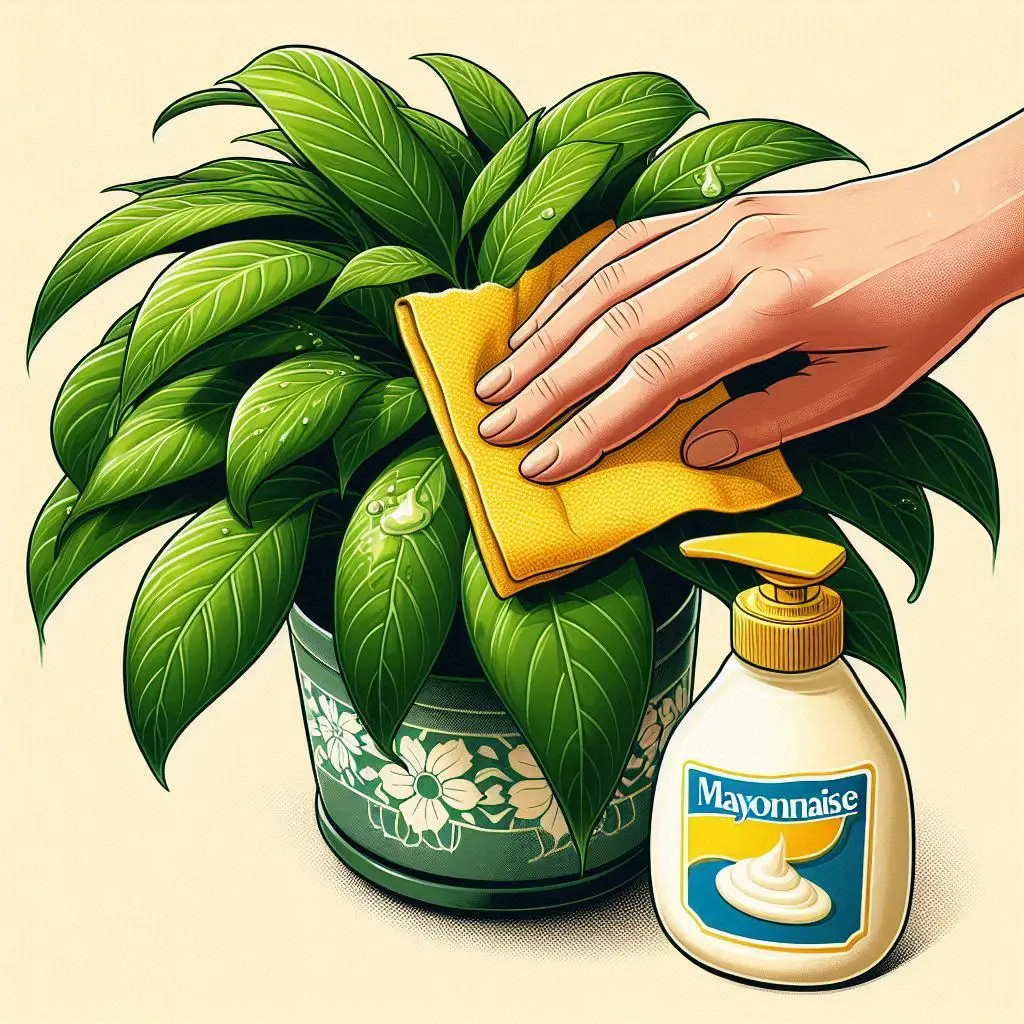
This method may not be suitable for all plants; for example, African violets and any plants with fuzzy leaves.
First, remove dust and dirt from the leaves with a spray of warm water and dish soap solution.
Apply a little mayonnaise on a soft cloth and gently rub it onto each leaf individually. The oil in mayonnaise will make the leaves shiny and enhance their luster.
Then, wipe off the mayonnaise gently with another cloth.
Important points to consider for cleaning houseplants:
Remember that some types of houseplants, such as cacti and succulents, are not very compatible with certain cleaning methods mentioned. These plants should be cleaned using the dry method; for example, the toothbrush method mentioned above might be a good option.
Applying a mixture of milk and water on plant leaves can also make them shiny after removing dust and dirt.
When to clean houseplants? Read the quote from bioadvanced:
How often you need to clean plants depends on how dusty your home is. The easiest way to tell when your houseplants need cleaning is with a glance or finger swipe. If you can see the dust or feel it beneath your fingers, it’s probably time to clean.In colder regions, where rinsing larger plants outdoors isn’t an option year-round, consider giving plants an annual outdoor shower during warm weather. This is especially important for plants that have spent the summer outdoors.
Warnings about cleaning houseplants:
Avoid using commercial products designed to polish plant leaves. These products can clog the plant’s stomata and reflect the sunlight needed for photosynthesis.
Mayonnaise can attract mosquitoes and dust. Be sure to wipe off the leaves with another cloth afterward to prevent this from happening.
In this article, we tried to explain the best and most suitable methods for cleaning houseplants and also mentioned some important points to consider. If you have any questions, issues, or experiences, please write them in the comments section so that the experts from “My Plant and I” can respond to you as soon as possible.

